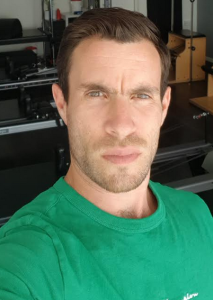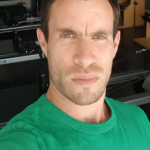Mind or Body?
by Eddie Adi Ron
September 19, 2019
Pilates is an effective platform for strengthening the body and the mind. Naturally, we base our teaching and our evaluation of students mostly on physical skills. But today, more than ever, I feel that mental, emotional, and cognitive skills are significantly important in the studio, as well as in life.
These days, our lives are filled with solutions for a lot of the challenges of yesterday, like using a GPS instead of spatial cognition, or “googling” instead of “remembering”. Physically, there are fewer demands from our environment, so we lose not just range of motion and strength but also motor coordination and proprioception. We live in a state of overstimulation from the endless information accessible at the swipe of a finger. This shortens the attention span and decreases the ability to be patient when things don’t meet our expectations.
Examples:
- There is a client that draws all of your attention because he never remembers the spring settings or basic instructions you have patiently explained.
- Another might complain that he doesn’t “feel” anything.
- Or the “strong” guy that pushes aggressively through an exercise without control flow or awareness.
The causes for these “irritations” might be boredom or lack of motivation. Perhaps the person is on the ADHD spectrum, or simply eager to sculpt his booty! Occasionally the cause is serious, such as early dementia.
Pilates Mind-body health
These kinds of neurological/psychological challenges pose a greater teaching challenge than an increased anterior pelvic tilt or rounded shoulders. In my teaching, I focus on posture, flexibility, and strength but I also work on people’s attention spans and teaching the importance of staying committed to a process without obsessing about the aesthetic outcome. Getting stronger means performing better physically and mentally.
“Pilates is the complete coordination of body, mind and spirit.” — J. Pilates
The Pilates system has some emphasis on cognitive capacity (attention, rhythm, control, etc.). A well-taught Pilates class will create a positive impact on cognitive awareness, but to see clients progressing, I like to focus on:
- Gradually moving the client out of his (cognitive and motor) comfort zone
- Goal-oriented work for better adherence
- Creating a positive environment and feedback
I have been researching and developing this approach for the past several years. I have seen some of my most unconsciously cognitive-incompetent students become consciously competent in just a few months’ work. This could mean that sensory and the motor stimulation that is created in the environment (C.A.P.E or Cognitively Amplified Pilates Exercise) is creating new neural pathways in their hippocampus (see Norman Doidge, “The Brain’s Way of Healing”).
Strategies
- Introducing multiple tasks/demands to an exercise for increasing divided attention capacity.
This strategy demands gradual progression – introduce only one new demand at a time – otherwise efficiency and performance of each demand will decrease. Remember: adding cognitive complexity is easy, but then you risk making a “brain” rather than a “body” exercise. Let’s try to create smarter movers, not better thinkers.
Let’s play with the breathing pattern in Double leg stretch (click here to see: video 1):
- Inhale on the reach outward and then hold the breath and position before hugging the legs back in on each rep, AND, gradually increase the hold time for each rep (2 seconds, then 4, 6, 8?, 10????
)
- Then, (adding demands), after the isometric hold, exhale slowly while opening the arms out horizontally, pause, and draw the knees into the chest on the same exhale.
Here I demonstrate playing with breath patterns.
This cognitive “challenge” can also prove to be physically challenging, so modify freely for each person you are teaching.
2. Enhance attention using a metronome
I find that rhythm enhances the ability to focus (think how calming it is to focus on the sounds of the ocean), so for me this a powerful tool in my Pilates teaching.
Let’s use the Single Leg Stretch since it’s less demanding physically and we can safely stay in the position for a sustained period of time.
Set your metronome (easily downloadable as an app so you can do this on your phone) at 70 bpm, 3 beats per bar. Every 3 beats (1 bar) switch legs, pulling the leg in on “ONE” and the “TWO”, and “THREE”, and then switch “ONE”and so on. Do 12 Reps and rest.
Video demo of using the metronome for your viewing pleasure.
Give it a try and see how you feel. Were you more present in the exercise? Were you less distracted with irrelevant thoughts?
When we are focused, we are automatically brought back to the present. Presence is an important practice. Most of us are usually caught up or worried about something we should have done or anxious about what we need to do.
These are two of the strategies I like to use with clients and in my own practice. I have found that most clients become more present and attentive in their practice and more receptive to the process. And I hope, just like their new acquired movement patterns carry over to their personal life, so will the new cognitive skills and behavioral patterns carry over and improve their quality of life even more.
“If you are depressed you are living in the past, If you are anxious you are living in the future but if you are at peace, you are living in the present”. — Lao Tzu (founder of Taoism)
 Eddie was first introduced to Pilates in the IDF Navy (2002) where it was part of the exercise routine. Eddie studied Product Design in 2006 and opened a surfing school during his time as a student. Part of the exercises he would give his students were the same Pilates exercises he practiced during his time serving in the Navy. In 2010, he used his Design skills and combined them with Pilates and Surfing, and designed an unstable floating surface and created Surf specific exercises (Pilates based) for it. He trained the Billabong surf team and many more on the floating mats.
Eddie was first introduced to Pilates in the IDF Navy (2002) where it was part of the exercise routine. Eddie studied Product Design in 2006 and opened a surfing school during his time as a student. Part of the exercises he would give his students were the same Pilates exercises he practiced during his time serving in the Navy. In 2010, he used his Design skills and combined them with Pilates and Surfing, and designed an unstable floating surface and created Surf specific exercises (Pilates based) for it. He trained the Billabong surf team and many more on the floating mats.other people’s lives as well.

